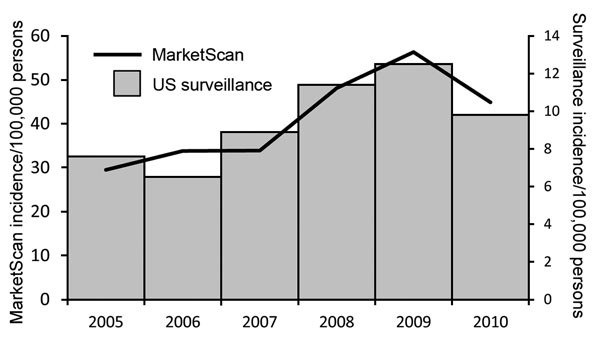Volume 21, Number 9—September 2015
THEME ISSUE
Emerging Infections Program
Emerging Infections Program
Incidence of Clinician-Diagnosed Lyme Disease, United States, 2005–2010
Figure 2

Figure 2. Trends of annual incidence of Lyme disease in MarketScan compared with trends in incidence from US surveillance, 2005–2010. Incidence is per 100,000 persons. Trends in interannual incidence fluctuation did not differ significantly between MarketScan and US surveillance (χ2 test, p = 0.81). *Cases reported through the National Notifiable Diseases Surveillance System. During 2005–2007, incidence was calculated as the number of confirmed cases/100,000 persons; during 2008–2010, incidence was calculated as the number of confirmed and probable cases/100,000 persons. US 2010 Census population estimates were used as the denominator for surveillance data incidence calculations.
Page created: August 12, 2015
Page updated: August 12, 2015
Page reviewed: August 12, 2015
The conclusions, findings, and opinions expressed by authors contributing to this journal do not necessarily reflect the official position of the U.S. Department of Health and Human Services, the Public Health Service, the Centers for Disease Control and Prevention, or the authors' affiliated institutions. Use of trade names is for identification only and does not imply endorsement by any of the groups named above.